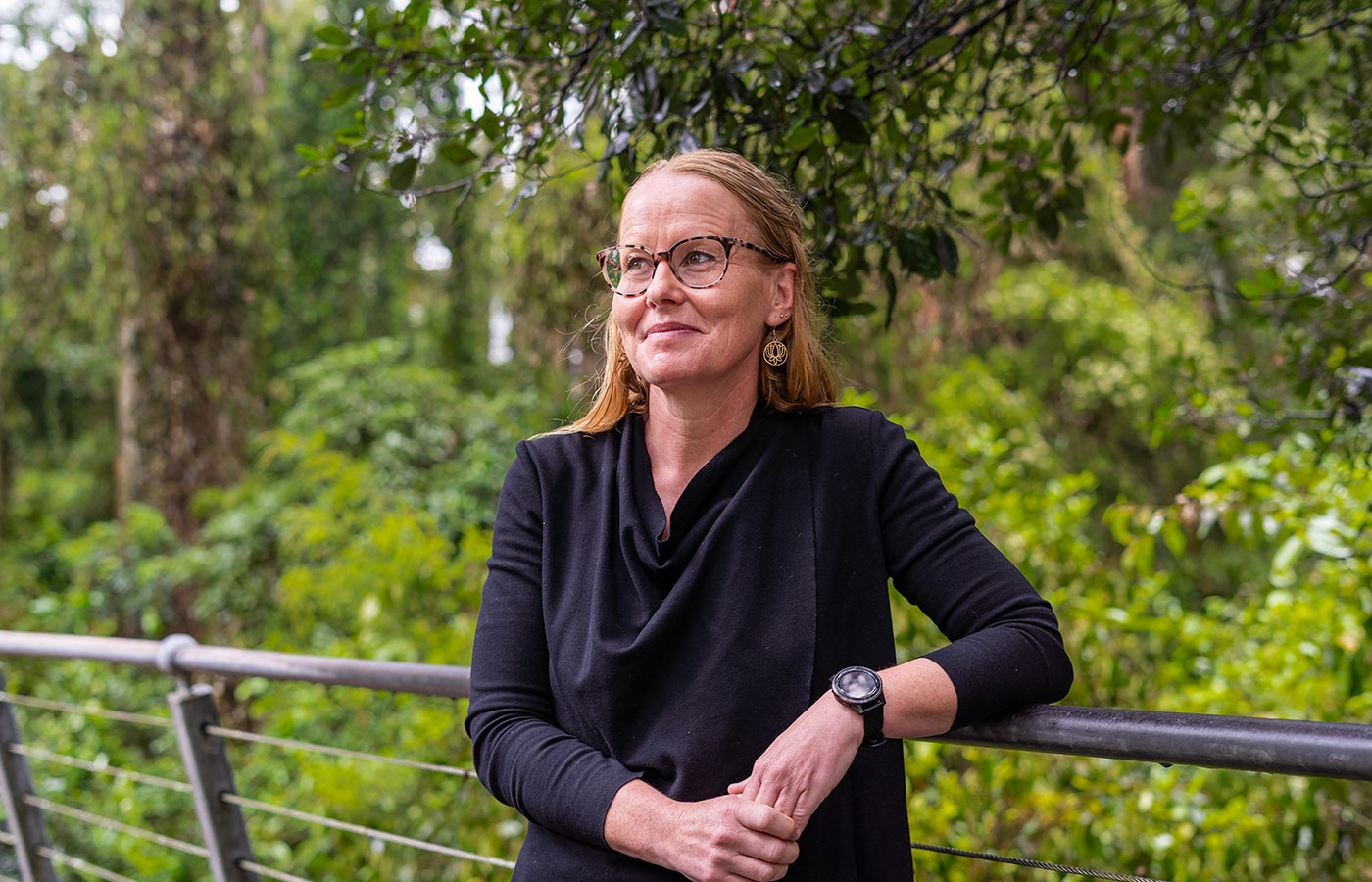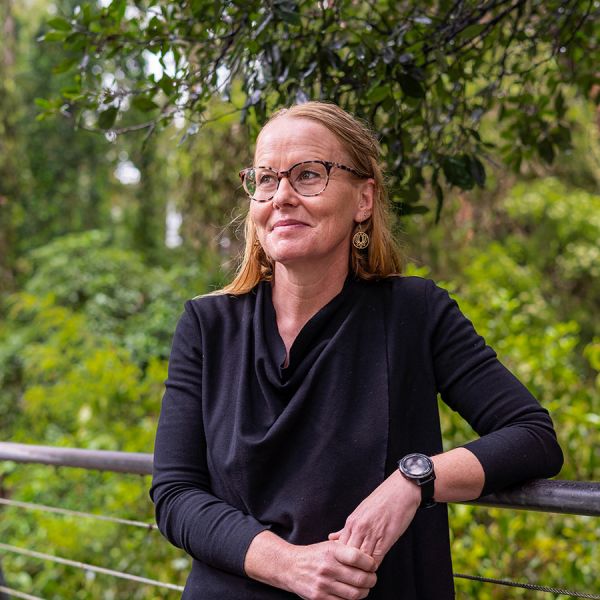Giving ‘place attachment’ a seat at the decision-making table
Dr Hedda Askland
What will the landscapes of the Hunter Valley look like post-mining? How will local communities evolve? These are the current questions anthropologist Dr Hedda Askland is asking as she explores the social impacts of spatial change.

At a broad level, Hedda’s research remit delves into the deep-rooted factors that shape home, identity and belonging among people facing significant social, political and environmental changes.
More specifically, it highlights and promotes the concepts of ‘place’ and ‘place attachment’—the emotional bond between individuals and their environments.
In her early scholarly work, Hedda focused on the experiences of exile, identity and home within the East Timorese diaspora in Australia.
Her interest in the questions of displacement remains in her current work. However, rather than exploring the experiences of people who have left their home country to seek refuge in Australia, she has turned her lens to how experiences of displacement can occur when still at home.
For almost ten years, Hedda has worked with rural communities impacted by extractive industries. This was instigated by her post-doctoral research in the School of Architecture and Built Environment, which led to a growing interest in the anthropological dimensions of both built and natural environments, as well as the impact of large-scale infrastructure and development projects on community dynamics, identity and sense of belonging.
Upon examining the situation close to home in the Hunter Valley, she recognised that significant ‘invisible’ displacement was occurring in mining communities.
To further understand this issue, she conducted an ethnographic study in the Upper Hunter and Mid-Western regions, concentrating on the village of Wollar, which is surrounded by three open-cut coal mines. The study examined how residents felt about a proposed extension of these mines closer to the village. The findings showed distress connected to the future.
“This was when I realised we needed to expand our current concepts of displacement to encompass people’s lived experiences and their imagined futures—not just the physical removal from a place,” Hedda explains.
This approach challenged traditional ways of understanding and discussing displacement and relocation. It also led to her coining the phrase ‘eritalgia’, a term that points to the embodied sense of displacement that may occur when there’s a rupture between lived realities and imagined emplaced self.
People and post-mining landscapes
With the Hunter Valley now undergoing significant changes—including power plant closures, impeding mine closures and expansions of renewable energy projects in response to the need to reduce carbon emissions—Hedda’s research has evolved to focus on the future of fossil fuel-dependent communities.
“While my earlier research centred on conflict and the negative impacts of change, this new phase explores not only the challenges but also the opportunities that arise as part of the transition away from fossil fuels and within post-mining landscapes,” she explains.
Hedda is working with an interdisciplinary team, including Dr Meg Sherval (Geography and Environmental Studies), a PhD student and two research assistants, to better understand how people think and feel about these transitions.
“The project takes an innovative, mixed-method, arts-based approach,” she explains.
In addition to interviews with technical experts that focus on advancing insights on the challenges and opportunities of the final voids that will be left at the conclusion of mining, the project seeks to engage community members of all ages in a conversation about the fragmented, post-mining landscapes that will remain post-mining.
This includes engaging with young people through art workshops, where they visually express their ideas for future landscapes, and creating a film—or visual essay—with a small group of young people. The work also involves walking interviews and photo voice with older members of the community.
Funded by the Australian Research Council, the research is set to run until 2026.
Looking ahead, the team plans to host an interactive exhibition, providing a space for people to engage with the research and share their own thoughts through a survey—broadening the conversation and deepening community involvement.
Uncertainty and hope in transition
So far, Hedda’s research reveals that people care deeply about their communities and want to see them thrive in the future. Lingering through the research is people’s fear of their communities becoming ‘ghost towns’ but also their hopes and commitment to a future in place.
She emphasises the importance of thoughtful development in places undergoing transition.
“It’s essential to understand residents' emotional attachment, which raises the question: how can we nurture that through new initiatives and policies? When we talk about the future, we need to ensure it reflects local ideas about what holds value for that place.”
Hedda goes on to share that people are worried about what will happen as the transition occurs. “It’s a combination of worry about becoming shadow places and being left behind or becoming a dumping ground for other projects.”
Alongside these concerns is quite a lot of uncertainty—who will lead the change, and what industries will replace the old ones?
A tension remains between those who see the need for change and embrace new projects and those who want to hold onto a slower pace. This is something Hedda says they don’t know the answer to just yet.
Social impact and industry
Hedda is also currently working on an industry-led project with BHP, one of the world’s largest resource companies, bridging the gap between community perspectives and key stakeholders in the region.
The project, named My Muswellbrook: Mapping Place Identity and Pride in Place, aims to understand what’s special about this regional town to the people who live there and what people would like to see happen there in the future.
“We’re inviting local residents to be part of workshops that explore people’s connection to place and hopes for the future”, explains Hedda.
Anyone aged 14 and over living in Muswellbrook is welcome to join the workshops.
The initiative marks the beginning of a community engagement process aimed at exploring potential projects for BHP’s support as the Mt Arthur Coal Mine transitions toward closure. The goal is to develop ideas for place-based, community-led projects that will foster long-term wellbeing and strengthen local connections.
In addition to this, Hedda is collaborating with the Social Impact Alliance, a grassroots group consisting of members of communities impacted by coal and gas development, to develop a report.
The report is aimed at advocating for greater recognition and improved support for local communities in social impact assessments, especially as this relates to the coal and gas sectors.
Overcoming contribution fatigue
A significant challenge Hedda and her team face in their work is consultation fatigue.
“There are so many stakeholders—government, industry, and others—seeking input from communities right now to gain insights,” Hedda explains.
“Because of this, we need to protect these communities by following best practices and finding ways to engage that are both meaningful and collaborative.”
The goal is to gather balanced perspectives without adding to the extractive nature of these processes.
The importance of social impact
The true impact of Hedda’s current research is still unfolding.
“We’re actively engaged in the work. It’s an ongoing conversation and a parallel policy discussion,” she notes.
“My goal is to incorporate stories that reflect community experiences, hopes and fears to truly ignite the dialogue around these issues.”
In this context, she has significantly highlighted the role of place and place attachment in social impact, demonstrating the importance of social values and community perspectives in understanding the effects of industry and environmental change.
Hedda has acted as an expert witness on social impacts for the NSW Independent Planning Commission and in the NSW Land and Environment Court.
One powerful example of her influence she gives is when she served as an expert witness in the NSW Land and Environment Court in 2018. Her testimony played a pivotal role in the 2019 decision to block the development of a new mine, in part because of the predicted social impact.
Ultimately, Hedda’s research underscores a critical shift. Meaningful change must go beyond numbers and metrics—it must account for the emotional landscapes of communities.
As fossil-fuel-dependent regions navigate an uncertain future, one lingering question remains: What will be left behind, not just in the landscape, but in the hearts and minds of those who call it home?
The University of Newcastle acknowledges the traditional custodians of the lands within our footprint areas: Awabakal, Darkinjung, Biripai, Worimi, Wonnarua, and Eora Nations. We also pay respect to the wisdom of our Elders past and present.
